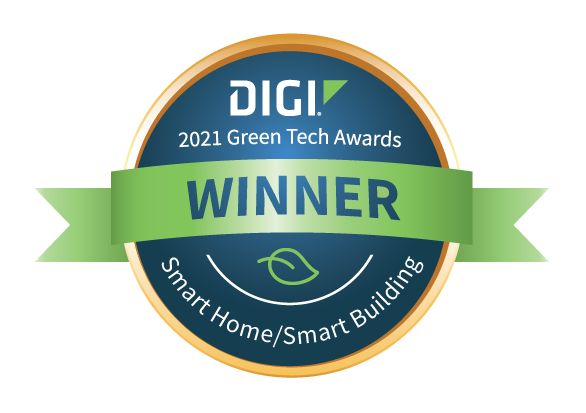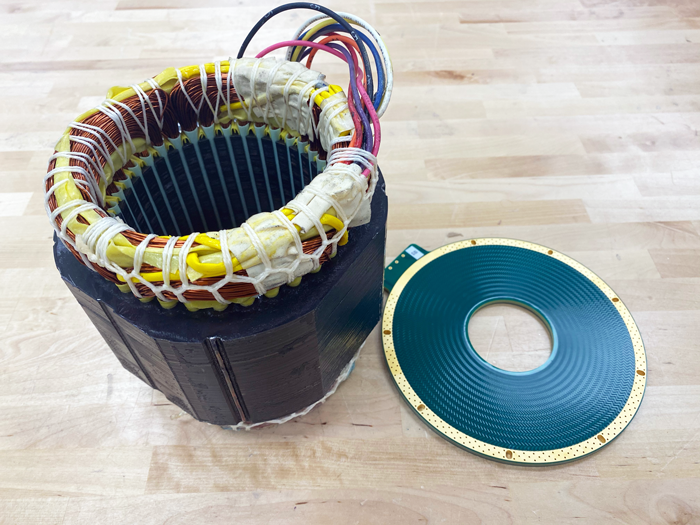
For Infinitum Electric, the ambitious mission is simple to state, but challenging to achieve: “Power more with less.” With 53% of the world’s energy consumed by traditional electric motors, Infinitum Electric is aiming to reinvent the electrification landscape with its patented PCB stator technology that creates smarter, lighter, quieter and more environmentally responsible electric motors and generators that offer superior efficiency and durability. Digi XBee® cellular modems play a key role in that mission as the company targets major opportunities in HVAC.
 Bringing Innovation to Motors
Bringing Innovation to Motors
For more than 100 years since its invention, the basic design of the electric motor – the workhorse of our civilization – has largely remained unchanged: a stator made of copper windings wound around an iron-laminated core. In HVAC settings, that has meant heavy, high-maintenance motors that are noisy and inefficient.
Shams Shaikh, Director of Product for Infinitum Electric, shared that the company saw potential for a more innovative and green design, using patented printed circuit board (PCB) technology with etched copper conductors. The Infinitum motor requires few materials, is easier and cheaper to transport, and operates more efficiently, which reduces its carbon footprint. Currently marketed for HVAC applications, Infinitum’s motor mostly replaces the traditional fan, compressor, and pump motors in conventional HVAC units, changing the way HVAC motors consume and create electricity.
The new design, which won the 2021 AHR Product of the Year and Building Automation Innovation Award for its smaller, smarter design, can deliver significant benefits. “In addition to ultra-high efficiency, replacing the traditional stator with our patented version results in quieter operation and reduced vibration, which are major advances in HVAC units,” Shaikh said. “Compared to traditional electric motors, this new design is up to 60% lighter, saves customers up to 25% in operating cost, and provides superior durability and performance to create the highest-performing and most cost-effective HVAC motor available today.”
An IoT Motor for HVAC
Since Infinitum’s motor uses PCB stator technology and integrated power electronics, the solution can also tap into IoT connectivity. That means owners and operators can centrally and remotely monitor its power, speed, torque, vibration, temperature, and pressure. “We started with a PCB-based motor to improve size, weight, and performance,” Shaikh said. “Then we added sensors to monitor various aspects of the motor’s performance. But by pushing that data to the cloud, we knew we could enable a customer to collect operational data and run analytics across a portfolio of thousands of devices to predict failure or optimize maintenance protocols. We were looking for experts in IoT connectivity and after evaluating solutions on the market we chose the Digi XBee family of modules.”
But by pushing that data to the cloud, we knew we could enable a customer to collect operational data and run analytics across a portfolio of thousands of devices to predict failure or optimize maintenance protocols. We were looking for experts in IoT connectivity and after evaluating solutions on the market we chose the Digi XBee family of modules.”
Digi XBee 3 smart cellular modems offer engineers an easy and fast way to integrate cellular connectivity into an OEM device or IoT gateway. That accelerates time to market for designers, OEMs, and solution providers by providing pre-certified wireless connectivity that’s built on proven industry-leading technology. Digi XBee 3 modules offer the flexibility to switch among multiple frequencies and wireless protocols and are ideal for moderate bandwidth (typically < 25 MB per month) and low-cost IoT applications.
“As a startup, we have limited funding and a short runway to get to market and start generating revenue,” said Bhavnesh Patel, Vice President of Business Development at Infinitum. “Digi was a great choice for us because most of what we needed was built, tested, certified, and reliable – right out of the box. In particular, Digi has put a lot of thought into security, which is a major issue for our customers. And with Digi Remote Manager®, we can quickly provision and centrally manage IoT connectivity.”

Shaikh noted that Digi solution architects provided important assistance to improve the design and accelerate the product-development process. “Digi helped us with customized antennas,” he said. “When you have a motor of this size, it can create a lot of interference, so the shape and placement were tricky. Since these are mostly on rooftops, we wanted to minimize the risks of vandalism, breakage, and wear-and-tear. Digi also helped us make agreements with carriers and plans, which meant everything was ready to go, including the SIM and the data plan.”
Analyzing Aggregated Data
“Infinitum’s motors give HVAC industry OEMs the ability to rise to the top of their markets with a breakthrough offering that dramatically improves efficiency and lowers cost,” said Patel. He added that just as importantly, they can aggregate and analyze data in real time – such as vibration and temperature measurements – to assess the health of the device and alert customers to potential service needs.
“The next step will be to overlay that data and create condition monitoring signatures. For instance, a rising temperature and a spike in the accelerometer sensor might indicate a clogged filter or a bearing failure and those events are highly correlated with likely device failure within the next 72 hours. Not only does this minimize unplanned downtime, it also minimizes unnecessary truck rolls, and ensures more efficient site-visits for repairs.”

Patel added that another critical reason for choosing Digi was the ability to perform remote firmware updates over-the-air. “Similar to Tesla, as we make updates such as improved efficiency or new features, we can make those updates available to customers through a simple and secure portal, via Digi Remote Manager.”
Shaikh explained that the first market entry is for HVAC-specific products – mostly replacement units in existing buildings. In the first 12 months, the company expects to deploy 5,000 units, with another 8,000 units expected in the subsequent year. “Our innovations will extend into a multitude of industries as we continue to ramp and grow,” he said.
Next Steps